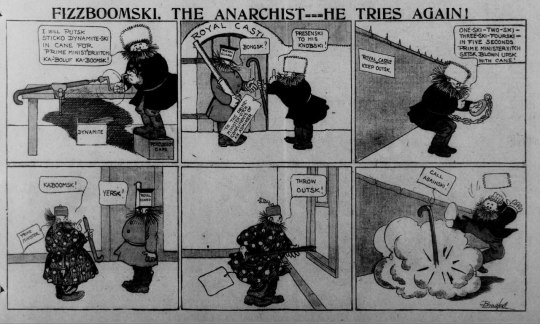#nazi propaganga
Text

Anti-anarchist cartoon, from the days when all east-european migrants were portayed as bomb-throwing idiots. The San Francisco Call, 1907.
#antianarchist#cartoons#cartoon#comics#comic#propaganda#fascist propaganda#nazi propaganga#rightwing propaganda#propagandhi#ausgov#politas#auspol#tasgov#taspol#australia#fuck neoliberals#neoliberal capitalism#anthony albanese#albanese government#nazisploitation#nazis#nazigate#nazi#neofascism#antifa#antifascist#antifaschistische aktion#antinazi#antiauthoritarian
1 note
·
View note
Note
beastars does talk about some dark topics and adult content
yeah but my friend is saying it has nazi and anti-gay propaganda which ? huh?
#maybe i never noticed or remembered but i dont_? remember anything nazi propaganga esc or anything thats anti gay#ask to tag
0 notes
Note
If you don’t mind my asking, in response to your anti-cop messages being used as a cover for antisemitism, (and this is probs going to sound SO ignorant I’m sorry) what is problem with them being called “lizard people”? I’ve only ever heard the term in a non-serious manner so I don’t understand what the negative connotation is and how it connects to antisemitism
hello there!
the “lizard people” conspiracy is, unfortunately, deeply rooted in Nazi propaganga, which often portrays Jews as a power-hungry, deceptive, inhuman group that secretly controls the world.
here’s some more reading on this topic bc i’m having brain fog and i’m not sure how well i can articulate rn, searching “lizard people antisemitism”/similar should also bring up some more stuff to read!
11 notes
·
View notes
Photo

MWW Artwork of the Day (5/30/17)
Otto Dix (German, 1891-1969)
War Tripytch: Central panel - Afternoon: The Trench (1932)
Mixed media on wood, 204 x 204 cm. panel
Staatliche Kunstsammlungen, Dresden
The First World War -- one fought largely in the trenches -- left its mark on an entire generation of Europeans. It made the victors, the French and British, wary about engaging in another war on such a scale. For the losing side it had widely contrasting effects: on the one hand, a lust for revenge and romanticization of war by the Freicorps and Nazis; on the other, a need to come to terms with its horrors and exorcise them through art, something no one did better than Erich Maria Remarque in literature and Otto Dix in painting. Before the Nazis came to power and took away his livelihood, Dix had extablished his reputation with two types of works: savagely satirical paintings of social mores under the Weimar Republic, and ghastly portrayals of life in the WWI trenches. In 1924 he released his series of war sketches, Der Kreig (The War), modelled on Goya's "Disasters of War," to great critical approval. He followed that up with the "War Tripytch" (of which this is the center panel) in 1932. Though only shown publicly once, that was enough to get him fired. The new Nazi cultural dictator Propaganga Minister "Jerk-off Joe" Goebbels thought it dangerously "un-German" -- an affront to the heroism and nobility of war.
In its essence, the "War Tripytch," structured as it is on the altarpieces of old German masters like Matthias Grünewald, is a Christian passion play, minus the possibility of salvation. In the left panel ("Morning") a column of soldiers go into battle, just as Jesus went to Golgotha. The center panel ("Afternoon" -- aka "The Trench") is a gory scene of total devastation and "death by machine," its mangled corpses surveyed by a soldier in gas mask crouching under the ruins of a bridge on which is impaled a corpse. In the right panel ("Night") Dix himself, illuminated by a flare, carries a wounded comrade away from the line of fire. In the predella below the main panels (one traditionally reserved for corpses) soldiers sleep in an underground bunker, refreshing themselves for the next day's battle. Not exactly your standard right-wing depiction of war.
A comprehensive selection from Dix's work comprises the MWW exhibit/gallery:
* Weimar III: Otto Dix - The Artist as Witness
6 notes
·
View notes